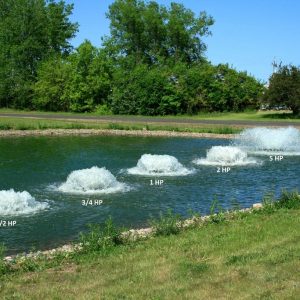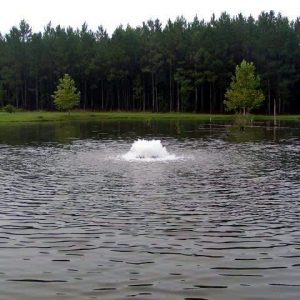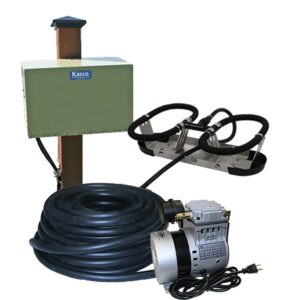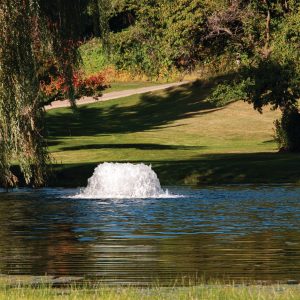Pond Aeration is probably the most important thing to consider for the health of a pond. First of all, it’s needed for fish health. Without proper aeration, fish kill can occur with pond turnover. Even if you don’t have fish, without proper aeration, the pond becomes stratified into layers of water, usually with the warmer water at top and colder water at the bottom, where oxygen is depleted. Pond aeration adds dissolved oxygen into the pond and helps to de-stratify so that oxygen is spread more evenly throughout.
Showing all 7 results
-

Kasco2400A Aerator, 1/2 HP model
$988.00 View Details -

Kasco 3400A Surface Aerator, 3/4HP
$1,051.00 View Details -

Robustaire Diffuser Systems for Deep Ponds
$1,480.00 View Details -

Kasco 4400HAF Pond Aerator, 1 HP Aerator
$1,625.00 View Details -

Kasco 8400AF Surface Aerator, 2 HP
$2,204.00 View Details -

Kasco 2.3 AF Surface Aerator with Float, Three Phase
$7,288.00 View Details -

Kasco U3.3F Aerator, 3-Phase, 3 HP
$7,962.00 View Details

